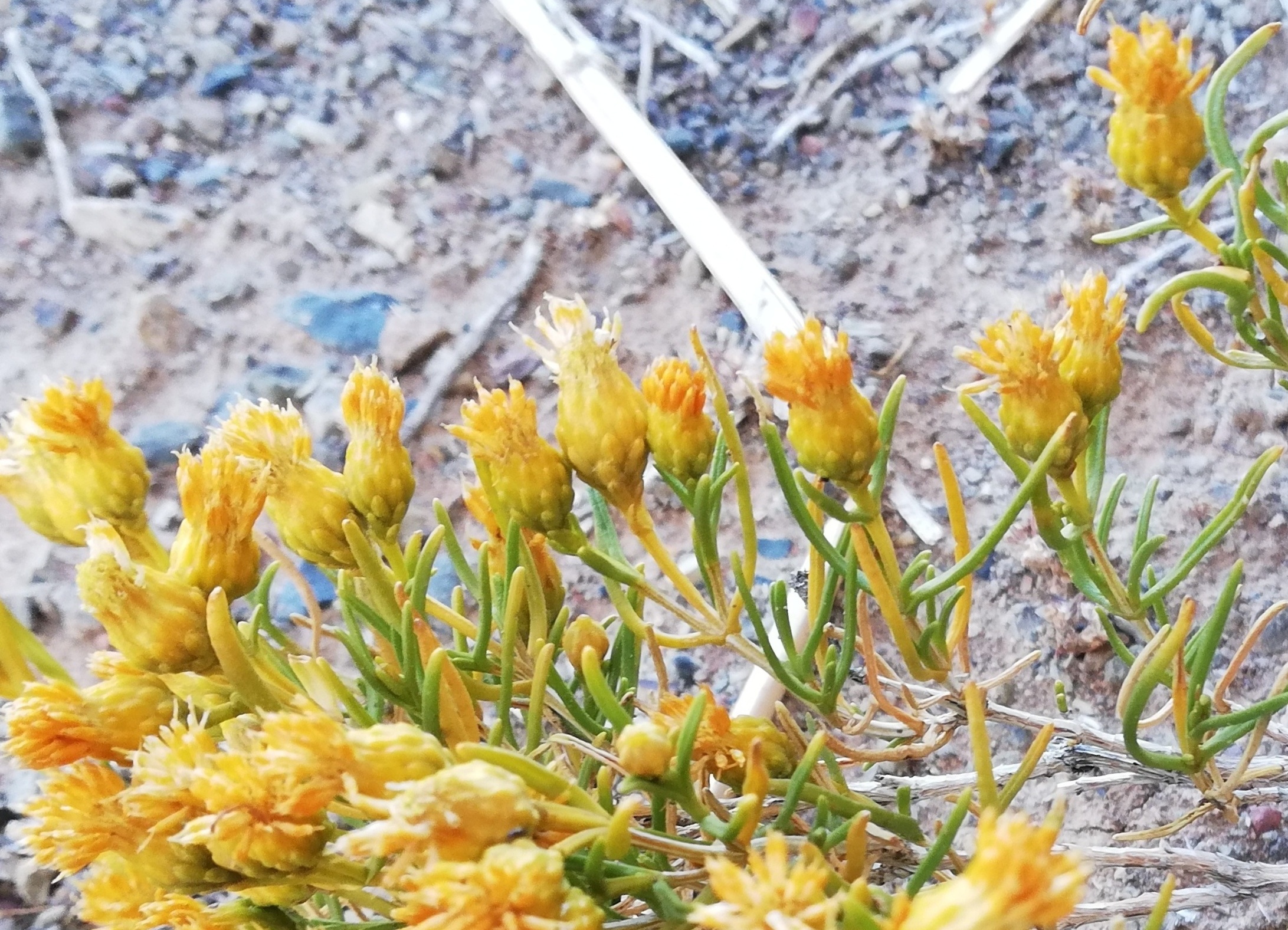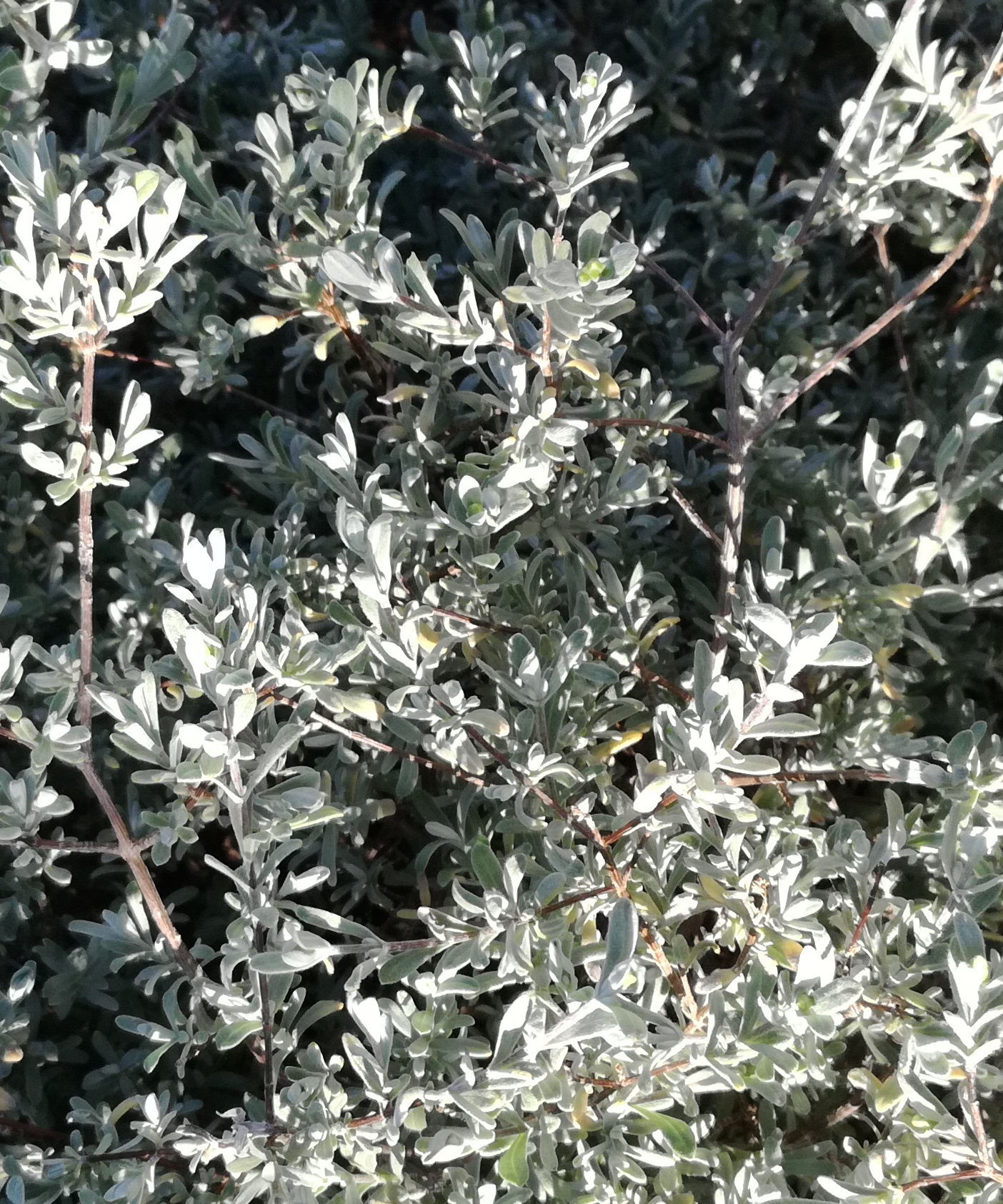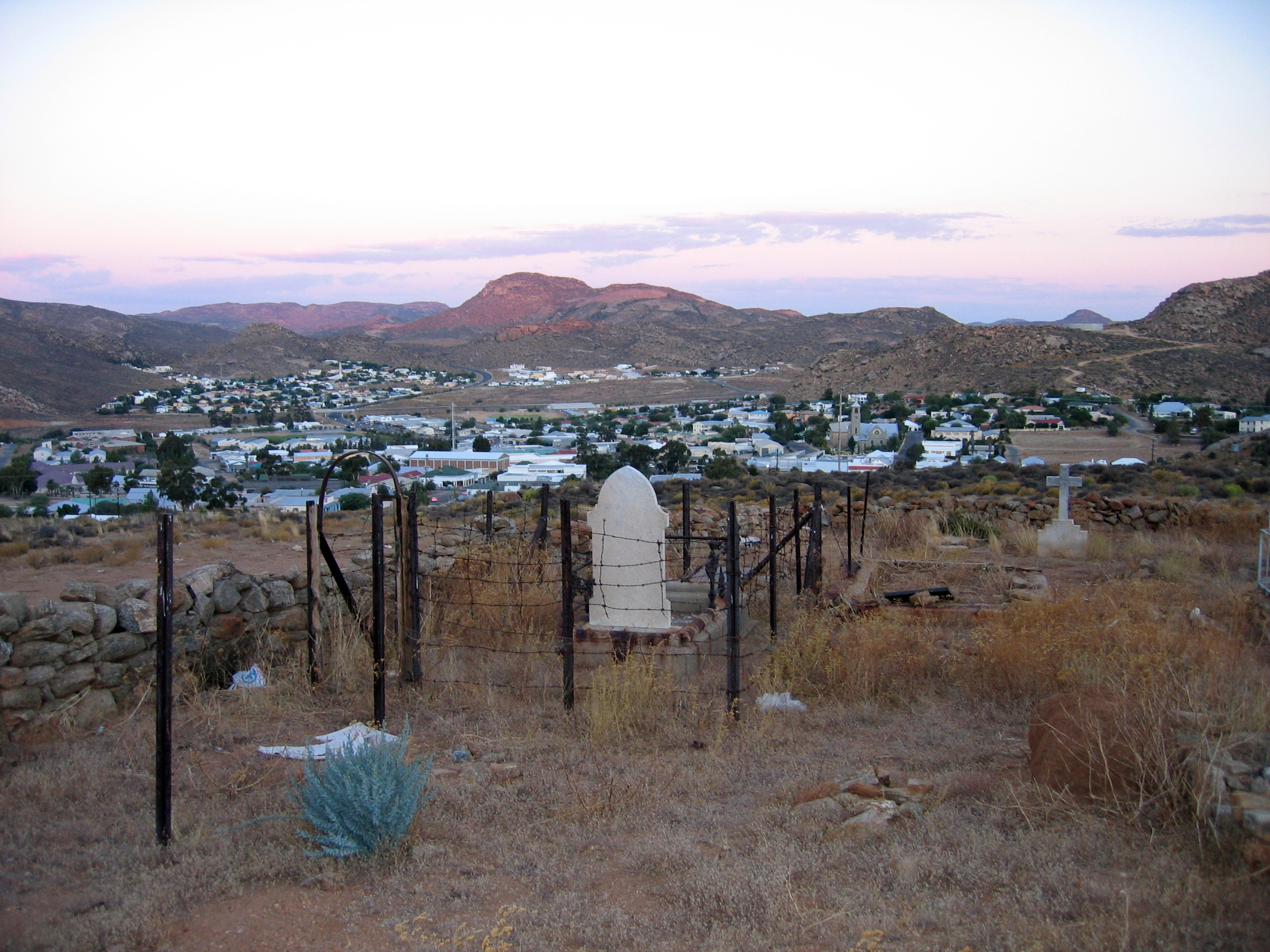|
Pteronia Pallens
''Pteronia pallens'' ("Scholtzbos" or "Aasvoëlbos / Witbas") is a species of flowering plant in the family Asteraceae, indigenous to the Karoo regions of South Africa. Its natural habitat is dry, rocky slopes. It often cooccurs with its close relatives, ''Pteronia paniculata'' or ''Pteronia incana''. Description A small shrub with pale woody stem. The leaves are slender, blunt-ended, channeled and green. One to three rounded, discoid flower heads appear at the tips of the branches. This helps to distinguish it from the otherwise similar species ''Pteronia paniculata''. Distribution This species occurs in the western Little Karoo, the western Great Karoo and into the Northern Cape Province. It usually grows on lower slopes on silt or sand that is often calciferous (often overlying calcrete). References Pteronia, pallens Endemic flora of the Cape Provinces Least concern plants Plants described in 1917 {{Astereae-stub ... [...More Info...] [...Related Items...] OR: [Wikipedia] [Google] [Baidu] |
Flowering Plant
Flowering plants are plants that bear flowers and fruits, and form the clade Angiospermae (). The term angiosperm is derived from the Ancient Greek, Greek words (; 'container, vessel') and (; 'seed'), meaning that the seeds are enclosed within a fruit. The group was formerly called Magnoliophyta. Angiosperms are by far the most diverse group of Embryophyte, land plants with 64 Order (biology), orders, 416 Family (biology), families, approximately 13,000 known Genus, genera and 300,000 known species. They include all forbs (flowering plants without a woody Plant stem, stem), grasses and grass-like plants, a vast majority of broad-leaved trees, shrubs and vines, and most aquatic plants. Angiosperms are distinguished from the other major seed plant clade, the gymnosperms, by having flowers, xylem consisting of vessel elements instead of tracheids, endosperm within their seeds, and fruits that completely envelop the seeds. The ancestors of flowering plants diverged from the commo ... [...More Info...] [...Related Items...] OR: [Wikipedia] [Google] [Baidu] |
Asteraceae
Asteraceae () is a large family (biology), family of flowering plants that consists of over 32,000 known species in over 1,900 genera within the Order (biology), order Asterales. The number of species in Asteraceae is rivaled only by the Orchidaceae, and which is the larger family is unclear as the quantity of Extant taxon, extant species in each family is unknown. The Asteraceae were first described in the year 1740 and given the original name Composita, Compositae. The family is commonly known as the aster, Daisy (flower), daisy, composite, or sunflower family. Most species of Asteraceae are herbaceous plants, and may be Annual plant, annual, Biennial plant, biennial, or Perennial plant, perennial, but there are also shrubs, vines, and trees. The family has a widespread distribution, from subpolar to tropical regions, in a wide variety of habitats. Most occur in Hot desert climate, hot desert and cold or hot Semi-arid climate, semi-desert climates, and they are found on ever ... [...More Info...] [...Related Items...] OR: [Wikipedia] [Google] [Baidu] |
Karoo
The Karoo ( ; from the Afrikaans borrowing of the South Khoekhoe Khoemana (also known as !Orakobab or Korana) word is a semidesert natural region of South Africa. No exact definition of what constitutes the Karoo is available, so its extent is also not precisely defined. The Karoo is partly defined by its topography, Karoo Supergroup, geology and climate, and above all, its low rainfall, arid air, cloudless skies, and extremes of heat and cold. The Karoo also hosted a well-preserved ecosystem hundreds of millions of years ago which is now represented by many fossils. The Karoo formed an almost impenetrable barrier to the interior from Cape Town, and the early adventurers, explorers, hunters, and travelers on the way to the Highveld unanimously denounced it as a frightening place of great heat, great frosts, great floods, and great droughts. Today, it is still a place of great heat and frosts, and an annual rainfall of between 50 and 250 mm, though on some of the mountains i ... [...More Info...] [...Related Items...] OR: [Wikipedia] [Google] [Baidu] |
South Africa
South Africa, officially the Republic of South Africa (RSA), is the Southern Africa, southernmost country in Africa. Its Provinces of South Africa, nine provinces are bounded to the south by of coastline that stretches along the Atlantic Ocean, South Atlantic and Indian Ocean; to the north by the neighbouring countries of Namibia, Botswana, and Zimbabwe; to the east and northeast by Mozambique and Eswatini; and it encloses Lesotho. Covering an area of , the country has Demographics of South Africa, a population of over 64 million people. Pretoria is the administrative capital, while Cape Town, as the seat of Parliament of South Africa, Parliament, is the legislative capital, and Bloemfontein is regarded as the judicial capital. The largest, most populous city is Johannesburg, followed by Cape Town and Durban. Cradle of Humankind, Archaeological findings suggest that various hominid species existed in South Africa about 2.5 million years ago, and modern humans inhabited the ... [...More Info...] [...Related Items...] OR: [Wikipedia] [Google] [Baidu] |
Pteronia Paniculata
''Pteronia paniculata'' ("Gombos" or "gum-bush") is a species of flowering plant in the family Asteraceae, indigenous to the Karoo regions of South Africa. Description This aromatic species has sticky leaves but, unlike some other ''Pteronia'' species, the flowers are not sticky. It has slender, furrowed, needle, incurved, green leaves, held in opposite pairs. It forms clusters of flowers (several capitula) at the tips of its branches. This helps to distinguish it from the otherwise similar species ''Pteronia pallens''. Distribution This species is widespread, occurring from Namibia to the Robertson Karoo in the south, as well as eastwards into the Eastern Cape. Its natural habitat is dry, rocky apronveld and it is extremely common. Due to its being inedible for livestock, it achieves unnatural densities in areas that are overgrazed. It often cooccurs with its close relatives, ''Pteronia pallens'' or ''Pteronia incana''.J.Vlok & A.Schutte-Vlok (2010) ''Plants of the Klein ... [...More Info...] [...Related Items...] OR: [Wikipedia] [Google] [Baidu] |
Pteronia Incana
''Pteronia incana'' ("Asbos" or "ash-bush") is a species of flowering plant in the family Asteraceae, indigenous to the Karoo regions of South Africa. Description This species has small, light grey, woolly, fragrant leaves, and forms a low, dense bush. Its fragrant leaves have a variety of medicinal uses. The flowerheads appear in Spring, at the tips of the branches. They are solitary, yellow, 15mm wide, with non-sticky yellow-green bracts, and small of coconut. Relatives It often co-occurs with its close relatives, ''Pteronia paniculata'' or ''Pteronia pallens'', both of which have distinctive yellow-green leaves. ''Pteronia glauca'' ("Boegoekaroo") is a very similar species, which also has light grey leaves. However, unlike ''P.incana'', its outer branches are always down-turned. Distribution and habitat The distribution of this species is in the south-western Cape of South Africa. It occurs throughout the Little Karoo and Robertson Karoo, northwards through the Tanqua ... [...More Info...] [...Related Items...] OR: [Wikipedia] [Google] [Baidu] |
Little Karoo
The Karoo ( ; from the Afrikaans borrowing of the South Khoekhoe Khoemana (also known as !Orakobab or Korana) word is a semidesert natural region of South Africa. No exact definition of what constitutes the Karoo is available, so its extent is also not precisely defined. The Karoo is partly defined by its topography, geology and climate, and above all, its low rainfall, arid air, cloudless skies, and extremes of heat and cold. The Karoo also hosted a well-preserved ecosystem hundreds of millions of years ago which is now represented by many fossils. The Karoo formed an almost impenetrable barrier to the interior from Cape Town, and the early adventurers, explorers, hunters, and travelers on the way to the Highveld unanimously denounced it as a frightening place of great heat, great frosts, great floods, and great droughts. Today, it is still a place of great heat and frosts, and an annual rainfall of between 50 and 250 mm, though on some of the mountains it can be 250 to ... [...More Info...] [...Related Items...] OR: [Wikipedia] [Google] [Baidu] |
Northern Cape Province
The Northern Cape ( ; ; ) is the largest and most sparsely populated province of South Africa. It was created in 1994 when the Cape Province was split up. Its capital is Kimberley. It includes the Kalahari Gemsbok National Park, part of the Kgalagadi Transfrontier Park and an international park shared with Botswana. It also includes the Augrabies Falls and the diamond mining regions in Kimberley and Alexander Bay. The Namaqualand region in the west is famous for its Namaqualand daisies. The southern towns of De Aar and Colesberg found within the Great Karoo are major transport nodes between Johannesburg, Cape Town and Gqeberha. Kuruman can be found in the north-east and is known as a mission station. It is also well known for its artesian spring and Eye of Kuruman. The Orange River flows through the province, forming the borders with the Free State in the southeast and with Namibia to the northwest. The river is also used to irrigate the many vineyards in the arid reg ... [...More Info...] [...Related Items...] OR: [Wikipedia] [Google] [Baidu] |
Pteronia
''Pteronia'' ("resin daisies") is a genus of evergreen, woody perennial plants assigned to the family Asteraceae with currently 76 described species. Like in almost all Asteraceae, the individual flowers are 5-merous, small and clustered in typical heads, surrounded by an involucre of bracts. In ''Pteronia'', the centre of the head is taken by relatively few, yellow, disc florets, while a ring of ligulate florets is absent. These florets sit on a common base (or receptacle). Taxonomy A species of Gombos was first described and assigned to the new genus ''Pteronia'' by the famous Swedish naturalist Carl Linnaeus in the second edition of his groundbreaking Species Plantarum, the starting point of modern botanical nomenclature, that was published in 1763. He had not seen living plants or dried herbarium specimens, but based his description on an etching made by the English botanist Leonard Plukenet in 1700. This etching probably represents '' Pteronia camphorata'', which has bee ... [...More Info...] [...Related Items...] OR: [Wikipedia] [Google] [Baidu] |
Endemic Flora Of The Cape Provinces
Endemism is the state of a species being found only in a single defined geographic location, such as an island, state, nation, country or other defined zone; organisms that are Indigenous (ecology), indigenous to a place are not endemic to it if they are also found elsewhere. For example, the Cape sugarbird is found exclusively in southwestern South Africa and is therefore said to be ''endemic'' to that particular part of the world. An endemic species can also be referred to as an ''endemism'' or, in scientific literature, as an ''endemite''. Similarly, many species found in the Western ghats of India are examples of endemism. Endemism is an important concept in conservation biology for measuring biodiversity in a particular place and evaluating the risk of extinction for species. Endemism is also of interest in evolutionary biology, because it provides clues about how changes in the environment cause species to undergo range shifts (potentially expanding their range into a la ... [...More Info...] [...Related Items...] OR: [Wikipedia] [Google] [Baidu] |







